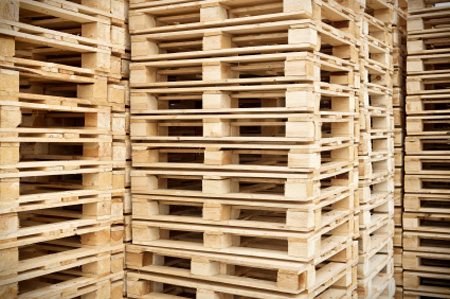you can definitely build a house from wooden pallets, but there are a few important factors to consider before you start. Pallets can be a great, sustainable, and cost-effective option for construction if you’re aiming for something creative or unconventional. Here’s a breakdown of the process and what to keep in mind:
Benefits of Building with Wooden Pallets
- Cost-Effective – Pallets are often free or very cheap, which makes them an affordable option for building.
- Sustainability – Using pallets is an environmentally friendly choice since they are often recycled and repurposed materials.
- Unique Aesthetic – Wooden pallet homes have a distinctive look that appeals to those looking for rustic, DIY, or eco-conscious designs.
Challenges of Building with Wooden Pallets
- Structural Integrity – Pallets are not naturally designed for heavy-duty construction, so you’ll need to ensure they are in good condition and may need to reinforce them to meet structural standards.
- Weather Resistance – Pallets are typically treated with chemicals like IPPC (International Plant Protection Convention) markings or other preservatives, so be cautious about exposure to the elements. Over time, untreated pallets may degrade if they’re not properly protected.
- Time and Labor-Intensive – Building a pallet house requires a lot of time, effort, and planning, especially if you’re using reclaimed or recycled pallets that need to be disassembled and repurposed.
Steps to Building a House from Wooden Pallets
1. Planning and Design
- Blueprints: Start with a solid design plan, especially if you’re new to pallet construction. You’ll need to figure out the size, layout, and any structural requirements (like load-bearing walls).
- Permits: Depending on your location, building a house (even a pallet house) may require permits, so check with local authorities before starting.
2. Sourcing Pallets
- Look for high-quality, undamaged pallets. The stronger and better condition the pallets are in, the better the house will be.
- Ensure the pallets are heat-treated or chemically treated to avoid pests and rot.
3. Foundation
- Start with a strong foundation to ensure your pallet home is stable. You can use concrete blocks, gravel, or treated wood beams to elevate the pallets off the ground and prevent moisture damage.
4. Framing & Wall Construction
- Disassemble the pallets: Break them down into individual planks if necessary, or use the entire pallet as a framework for the walls.
- Rebuild walls by stacking or arranging the pallets in rows. Ensure they are securely fastened together using screws or nails.
5. Insulation
- Pallet wood doesn’t offer much insulation, so consider adding extra layers like foam boards, recycled insulation, or even straw bales between the walls to help with temperature control.
6. Roof & Ceiling
- The roof can be built using traditional materials or you can make it out of pallets, though you might need stronger beams for support.
- Consider installing corrugated metal or shingles for weather protection.
7. Flooring
- You can use pallets as flooring, but it might be uneven, so you’ll need to add plywood or cement board to create a flat surface.
8. Windows and Doors
- You can repurpose windows and doors, or build custom ones from pallets and scrap wood. Make sure the door and window frames are properly sealed to avoid drafts and water damage.
Pros of a Pallet House
- Eco-friendly – Recycled pallets reduce waste.
- Low cost – A pallet house can be built for a fraction of the cost of traditional construction materials.
- DIY friendly – It’s a great project for those looking to build their own home on a budget.
Cons of a Pallet House
- Not for everyone – The house might be difficult to maintain in harsh climates.
- Limited durability – Pallets may need to be reinforced for better longevity.
- Legal considerations – You may need to check local zoning and building codes before proceeding.
Examples of Pallet Homes
There are some examples of pallet homes being built by communities or individuals as a way to promote affordable housing, tiny homes, or off-grid living. Some have been successfully used as temporary shelters, while others have become long-term homes.
Sourcing Wooden Pallets
Sourcing wooden pallets is an important step if you plan to use them for building a home or a project. Here are several ways to find pallets:
1. Local Businesses & Retailers
- Warehouse Stores: Many warehouse stores like Costco, Home Depot, or Lowe’s often have pallets from shipments and may give them away for free or for a small fee.
- Big Box Stores: Grocery stores, furniture stores, and other large retailers regularly receive shipments on pallets and might have some available. It’s a good idea to ask store managers if they have pallets they want to discard.
- Industrial Suppliers: Manufacturing and distribution businesses often have excess pallets. Check with local factories or industrial companies to see if they can offer any free pallets.
2. Online Platforms & Marketplaces
- Craigslist: Search for “free pallets” or “pallets for sale” in your local area. You can often find people or businesses giving them away for free or selling them at low prices.
- Facebook Marketplace: Check your local Facebook Marketplace for people selling or giving away pallets. Many people have extra pallets from furniture delivery, yard projects, or construction work.
- OfferUp: Another popular app for finding local items for sale or free items, including wooden pallets.
- Nextdoor: Check your neighborhood’s online network to see if anyone is offering pallets for free or for a low cost.
3. Construction Sites
- Building Contractors: Sometimes construction sites have leftover pallets from materials like brick or stone deliveries. It’s worth asking contractors or builders if they have excess pallets available for reuse.
- Renovations & Demolition: Pallets are sometimes discarded during renovations or demolition projects. Reach out to contractors or building companies for potential free pallets.
4. Pallet Suppliers or Manufacturers
- Pallet Companies: You can directly contact local pallet manufacturers or pallet rental companies. They may offer new, recycled, or damaged pallets at a low cost or can point you in the direction of where to find them.
- Recycled Pallet Companies: Some companies specialize in selling used pallets at discounted rates. These can be a great option if you need larger quantities or specific types of pallets.
5. Landfills & Recycling Centers
- Waste Management Centers: Some recycling centers or landfills allow you to take pallets for free, especially if they’re in good condition. It’s worth calling your local center to ask.
- Wood Recycling Centers: These centers are specifically focused on repurposing wood, so you may find pallets there at affordable prices or for free.
6. Local Farm and Garden Stores
- Farm Supply Stores: Smaller, local farm supply stores sometimes get deliveries on pallets and may have extras available.
- Garden Centers or Nurseries: Pallets used for transporting plants and soil may be available at local garden centers. You can ask the managers if they have extras they want to part with.
7. Online Listings for Specific Pallet Types
- If you have specific requirements (e.g., heat-treated pallets or certain sizes), you can try to find specialized pallets online through websites that list construction materials or pallets specifically.
Important Considerations When Sourcing Pallets:
- Condition of the Pallets: Always inspect the pallets for any damage (broken slats, cracks, or nails sticking out) before using them.
- Treatment: Ensure that the pallets are heat-treated (HT), as those with the ISPM-15 stamp are safe for reuse and don’t carry harmful pests. Avoid pallets with chemical treatments (marked with MB for methyl bromide) as they can be harmful.
- Quantity: If you’re building something large, like a house or a structure, it’s important to source enough pallets in advance. You may need to get them in bulk from businesses or suppliers.
Additional Tips:
- Build Relationships with Suppliers: If you plan on sourcing a lot of pallets, consider building relationships with businesses or stores for consistent access to pallets.
- Transportation: If you plan to pick up large quantities, consider how you’ll transport the pallets. You’ll likely need a pickup truck or flatbed truck for bulk pickup.
- Disassembly: You might need to disassemble pallets (taking apart the slats) for some projects. Make sure you have the right tools like a crowbar and hammer for easier disassembly.
Recycling wooden pallets is not only eco-friendly but can also save you money and reduce the demand for new pallets. It’s a sustainable practice that benefits both the environment and your local community.
Get a hold of AAA Pallet & Lumber Co., for all of your pallet needs, we sell new and new pallets, export pallets, and can even recycle your used pallets. Call us at 602-278-1450 for more information.





